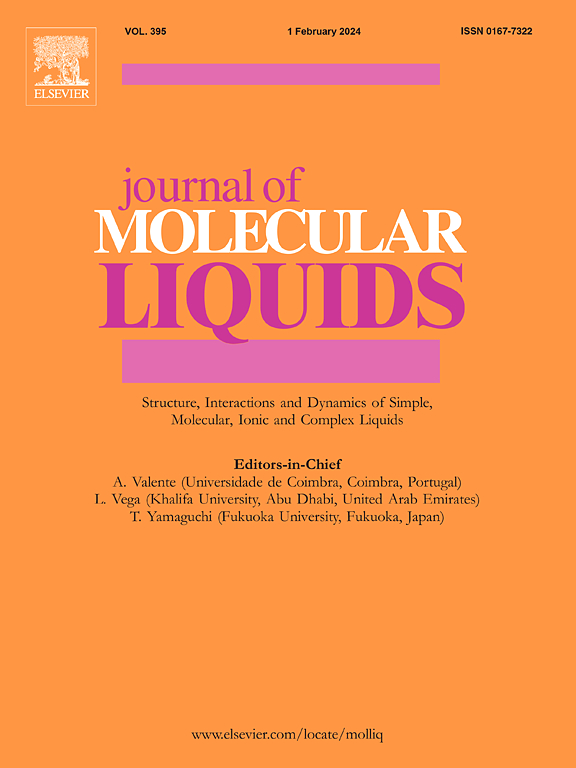Study of a low-damage and efficient-imbibition fracturing fluid for tight oil fracturing-oil displacement integration
IF 5.3
2区 化学
Q2 CHEMISTRY, PHYSICAL
引用次数: 0
Abstract
Traditional hydraulic fracturing techniques have long been criticized for their deficiencies, including low recovery efficiency, rapid production decline and complex processes. In order to overcome these shortcomings, fracturing-oil displacement integration has been proposed and attracted great attention in the past few years. In this study, a novel hydrophobically associating polymer (HETP) was synthesized and used as an additive to develop a low-damage and high-efficiency imbibition fracturing fluid that meets the fracturing fluid requirements in fracturing-oil displacement integration. A series of experiments were conducted to systematically study and evaluate the properties of the HETP fracturing fluid, including rheology, shear recovery, proppant transport capacity, gel-breaking performance, oil imbibition efficiency, and formation damage rate. The rheology test results showed that the viscosity retention rate of the fracturing fluid was 100.44% at 100℃. The performance tests demonstrated that the HETP fracturing fluid exhibited superior shear recovery and proppant transport capabilities. The evaluations of the broken fluids showed that the HETP fracturing fluids can effectively alter formation wettability, and can promote oil-washing efficiency and emulsifying ability. The spontaneous imbibition test results showed that the broken HETP fracturing fluid exhibited excellent general performance, with a low formation permeability loss of 8.12% and a high imbibition enhanced oil recovery (IEOR) rate of 36.4%, surpassing other molecular fracturing fluids. The oil recovery mechanisms of the HETP factoring fluid are also discussed in details, implying that HETP has enormous potential for future tight oil development.
求助全文
约1分钟内获得全文
求助全文
来源期刊

Journal of Molecular Liquids
化学-物理:原子、分子和化学物理
CiteScore
10.30
自引率
16.70%
发文量
2597
审稿时长
78 days
期刊介绍:
The journal includes papers in the following areas:
– Simple organic liquids and mixtures
– Ionic liquids
– Surfactant solutions (including micelles and vesicles) and liquid interfaces
– Colloidal solutions and nanoparticles
– Thermotropic and lyotropic liquid crystals
– Ferrofluids
– Water, aqueous solutions and other hydrogen-bonded liquids
– Lubricants, polymer solutions and melts
– Molten metals and salts
– Phase transitions and critical phenomena in liquids and confined fluids
– Self assembly in complex liquids.– Biomolecules in solution
The emphasis is on the molecular (or microscopic) understanding of particular liquids or liquid systems, especially concerning structure, dynamics and intermolecular forces. The experimental techniques used may include:
– Conventional spectroscopy (mid-IR and far-IR, Raman, NMR, etc.)
– Non-linear optics and time resolved spectroscopy (psec, fsec, asec, ISRS, etc.)
– Light scattering (Rayleigh, Brillouin, PCS, etc.)
– Dielectric relaxation
– X-ray and neutron scattering and diffraction.
Experimental studies, computer simulations (MD or MC) and analytical theory will be considered for publication; papers just reporting experimental results that do not contribute to the understanding of the fundamentals of molecular and ionic liquids will not be accepted. Only papers of a non-routine nature and advancing the field will be considered for publication.
 求助内容:
求助内容: 应助结果提醒方式:
应助结果提醒方式:


